#Potnia Theron
Explore tagged Tumblr posts
Text

Patère d’Argent trouvée à Lampsaque (Silver Patera/Disc found at Lampsacus) (ancient Lapseki, Turkey)
4th-3rd century BCE
Cybele/Potnia Theron/Ar-Themis/Diana/Kubaba/Ishtar/ or Hathor? Goddess served by priestesses, Amazons, or women devotees
Gazette Archéologique, 1877:

“The plate represents a silver patera found in Lampsacus and currently housed at the Museum of Sainte-Irène in Constantinople. According to General Freund (Said Pasha), who found it at Lampsacus while excavating a tomb, this patera is an object of significant archaeological interest. It provides one of the most beautiful depictions of Artemis. The goddess is seated facing forward on a golden throne. Her skin is black enamel, and her hair is styled in symmetrical braids reminiscent of the Amazons. She wears a turban adorned with two small deer horns. Her garment is a single golden robe speckled with stars, finely engraved into the metal. Her right breast is left bare, in the fashion of the Amazons.
The goddess holds a bow in her right hand, while in her left she holds an arrow and a cornucopia. To her left is a guinea fowl, and to her right is a hawk. The throne is decorated with a variety of animals. These animals were gifts from Pan, offered to the goddess as symbols of courage: lions, deer, and dogs. The scene evokes the imagery of ancient Amazons living in caves, taming wild animals. The patera from Lampsacus also depicts black-skinned women dressed in golden robes, leading lions. These lions symbolize “the great destruction of monsters,” a key aspect of Artemis’ iconography
Many Asiatic monuments—both Greek and non-Greek—depict Artemis victorious. Sometimes she appears on a chariot, as in the ancient artifact published by Montfaucon, or lying at rest at the feet of lions, as in the bas-reliefs from Kurdistan. Pausanias describes Artemis on a Cretan chest with wings, holding a panther in one hand and a lion in the other. The image resembles jewelry in the Louvre, particularly the jewels from Camirus studied by M. de Saulcy. While the winged representations of Artemis ceased over time, these representations were later replaced with other symbols, like the crescent moon. In this way, Artemis transitioned from her role as an Amazonian huntress to a lunar deity associated with fertility and life
Greek artists struggled to reconcile the Asiatic symbols with their understanding of Artemis. The crescent moon replaced the deer horns on her head, symbolizing fertility. Over time, even these symbols were abandoned, and Artemis transformed into one of the Olympian gods, distant from her original meaning. It is evident that the Asiatic Artemis was associated with fertility, often appearing in primitive forms. The Lampsacus patera highlights this connection: her right hand is raised, perhaps gesturing toward fertility, echoing symbols from Ida and ancient cults involving the Curetes and Dactyls. These cults celebrated Artemis as the Great Mother of all living things, akin to Rhea and Cybele
Primitive forms of Artemis were especially evident in Asia, where she was often worshipped as a fertility goddess. In Phrygia, Artemis was known as the goddess of love and fertility, but her chest was often depicted as wilted or withered, resembling depictions of Venus. Residents of Pontus even nicknamed Artemis “Priapus” and dedicated obscene images to her. In the Greek tradition, Artemis evolved to represent the earth and fertility but was reinterpreted to fit the Olympian pantheon. This transformation highlights the complex interplay between Asiatic and Greek religious traditions
Attempts to depict Artemis with wings were replaced with other artistic innovations. On some vases, she was depicted with Niobids, or black-skinned figures, who symbolize the dramatic myth of Niobe’s children slain by Artemis and Apollo. This interpretation recalls the punishment of hubris, with Apollo representing solar divinity and Artemis a chthonic, lunar force. The presence of the Niobids emphasizes the mythological contrast of light and darkness in representations of Artemis. In the artwork featuring Artemis with the Niobids, the figures are characterized by dramatic motion, sadness, or grief, heightening the tragic narrative of their punishment
The Asiatic Artemis, as depicted on the Lampsacus patera, demonstrates how symbols such as deer horns and fertility gestures were later adapted into Greek art. The crescent moon, for example, became a dominant symbol of Artemis as a lunar goddess. At one point, Artemis was understood as the “Great Mother” or the Earth itself. Her consort was Apollo, who represented the Sun. This duality mirrors Etruscan myths and even the Orphic tradition, further connecting Artemis to broader Mediterranean religious tradition”
~1877 edition of the Gazette Archéologique, a 19th-century French archaeological journal that documented and analyzed ancient artifacts, artworks, and inscriptions~
#ancient artifact#ancient Asia/europe#artifact#meditteranean#Turkey#amazons#Artemis#Diana#cybele#Hathor#Potnia Theron#Ishtar#kubaba#history#historical art#goddess#art#drawing#classical antiquity#black history#black women#black art#Roman goddess#Greek mythology#ancient europe#ancient Egypt#artwork#art history#roman mythology#archeaology
19 notes
·
View notes
Text
So I'm pretty sure it is done. I don't know I've never done this before. Permissions are set, channels are made, so nothing should go horribly wrong.
If you all still want to join, please click the link. For those of you who didn't see my previous posts, this is a discord for goddess worshippers of all types.
I have some basic channels like art, general, holidays, offerings, prayers, but I hope to fit this server to the needs and wants of the people in it.
#pagan#pagan blog#witch blog#witch#pagan witch#hellenic pagan#helpol#deity work#goddess#paganism#hellenic paganism#eclectic pagan#paganblr#witchcraft#witchblr#goddess worship#great mother#mother earth#mother nature#mother goddess#norse polytheism#kemetic paganism#celtic polytheism#magna mater#potnia theron
19 notes
·
View notes
Photo
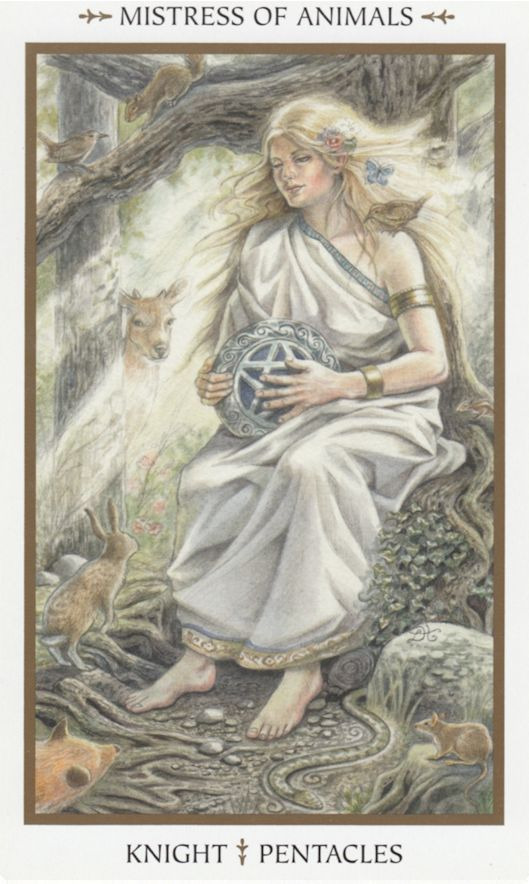
Knight of Pentacles. Art by Lisa Hunt, from the Animals Divine Tarot.
Mistress of Animals
#Lisa Hunt#Animals Divine Tarot#Knight of Coins#Knight#Coins#Minor Arcana#Tarot#Folklore#Mistress of Animals#Potnia Theron#Animals#Fox#Rat#Snake#Rabbit#Deer#Birds#Squirrel
30 notes
·
View notes
Text
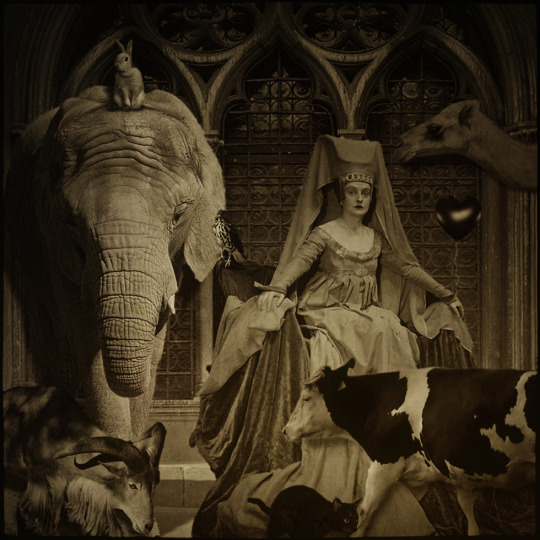
Potnia Theron or "Mistress of Animals"
Potnia theron or "Mistress of Animals" is the figure found more commonly in Minoan and Mycnenaean arts than any other Potnias. She was also known as "Lady of Wild Things", "Mistress of Wild Beasts", and several other similar titles.
[Jerry Jones on Flickr]
* * * *
The Circus Animals’ Desertion
I. I sought a theme and sought for it in vain, I sought it daily for six weeks or so. Maybe at last, being but a broken man, I must be satisfied with my heart, although Winter and summer till old age began My circus animals were all on show, Those stilted boys, that burnished chariot, Lion and woman and the Lord knows what. II What can I but enumerate old themes, First that sea-rider Oisin led by the nose Through three enchanted islands, allegorical dreams, Vain gaiety, vain battle, vain repose, Themes of the embittered heart, or so it seems, That might adorn old songs or courtly shows; But what cared I that set him on to ride, I, starved for the bosom of his faery bride. And then a counter-truth filled out its play, ‘The Countess Cathleen’ was the name I gave it; She, pity-crazed, had given her soul away, But masterful Heaven had intervened to save it. I thought my dear must her own soul destroy So did fanaticism and hate enslave it, And this brought forth a dream and soon enough This dream itself had all my thought and love. And when the Fool and Blind Man stole the bread Cuchulain fought the ungovernable sea; Heart-mysteries there, and yet when all is said It was the dream itself enchanted me: Character isolated by a deed To engross the present and dominate memory. Players and painted stage took all my love, And not those things that they were emblems of. III Those masterful images because complete Grew in pure mind, but out of what began? A mound of refuse or the sweepings of a street, Old kettles, old bottles, and a broken can, Old iron, old bones, old rags, that raving slut Who keeps the till. Now that my ladder’s gone, I must lie down where all the ladders start In the foul rag and bone shop of the heart. The Circus Animals’ Desertion - Yeats
#poem#poetry#The Circus Animals' Desertion#W.B.Yeats#Jerry Jones#Potnia Theron#mistress of animals#Lady of Wild Things
8 notes
·
View notes
Text
Kretisches Kaffeetagebuch: die Höhle der Göttin
Diesmal sind wir früh auf der Straße. Die führt uns zu einem ganz besonderen Ort etwa sieben Kilometer östlich von Iraklio und etwa einen Kilometer landeinwärts vom Küstenort Amnissos. Da sich die Anfahrt etwas schwierig gestaltet, hatte ich mir die Route Schritt für Schritt auf Google Maps angesehen. Bei Amnissos geht es runter von der Nationalstraße, dann nach links durch die Unterführung und…

View On WordPress
#coffeenewstom#Alkmene#Amnissos#Aphaia#Britomartis#Coffeenewstom#Dikte#Diktigebirge#Diktyna#Eileithya#Eileithyia#Eileithyia-Höhle#Eileithyias Cave#Gananthis#Höhle der Eileithyia#Hera#Iraklio#Iraklion#Karme#Kato Zakros#Kreta#Kreta-Reise#Kretareise#Potnia#Potnia theron#Zeus
0 notes
Photo
Did You Know?
Potnia Theron, a term first used by the Epic poet Homer, is applied to female divinities associated with animals.
Description
The pendant received in 2001 (2001.157) was originally from the same necklace as the identical pendant acquired by the museum in 1999 (1999.88). Both are exceptionally well preserved and depict the winged goddess Artemis, frontally posed and flanked by two lions. Each lion stands obediently on its hind legs, one forepaw placed symmetrically near the goddess's waist, head turned back. In Homer's Iliad, Artemis is called potnia theron, which means "mistress of the animals," a reference that may be applied to this image of the goddess. On the pendants, her image was created in a sheet of gold by burnishing it over a wooden, ceramic, or stone form. Alternating cloisons of green and blue glass enamel within an undulating gold wire frame the goddess and represent the earliest use of this substance yet known in Greek gold jewelry. The small loops at the bottom of the pendants probably held chains attached to pomegranate-shaped beads.

Daedalic (Archaic, orientalizing period of ancient Greece) Pendant with Potnia Theron (Mistress of the Animals). Made of gold and “glass-like substance.) c. 650-600 BCE, from Eastern Greece, Rhodes. From the Cleveland Museum of Art.
#history#classics#jewellery#greek mythology#ancient greece#archaic greece#greece#dodecanese#rhodes#daedalus#artemis#potnia#potnia theron#iliad#necklaces#pendants
70 notes
·
View notes
Text

***THIS BLOG IS 18+ ONLY. MINORS DNI***
TERFs/Dianic Wiccans are not welcome here.

Khaire 👋🫂
Welcome to my e-altar dedicated to Lady Artemis Potnia Theron 🌙🏹🦌
(complimentary devotional playlist included with your visit ⬇️)


About Me:
🌙 Taylor
🍄 Animist
🪷 They/Them
🦌 Adult (25+)
🏹 Oathbound devotee/worshiper of my beloved Patron, Divine Mother, and Queen; Mistress Artemis-Diana Potna Thea

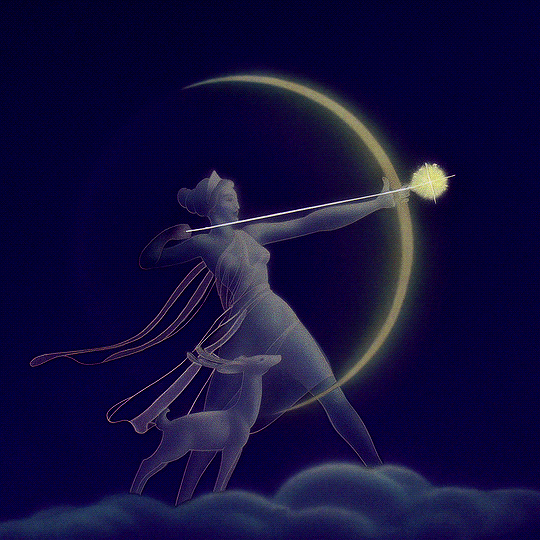

Praise to divine Mistress Artemis, architect of my soul and eternal keeper of my heart.
She of the wolves and of the deer. She of the hunt and of the fire. Swift running archer who haunts the forest wilds and roams in the night. The cresent moon, her silver bow. She who dwells at the mountain peak. She of the Earth and the Heavens.
Bestower of death with her showering arrows. Strong-voiced worker from afar who whispers, “Kneel, or be knelt.” Beautiful empress who bears sword and reins on her golden throne. She of the lake, the marsh, and the harbor. Far-shooter. Light-bringer. Dawn-breaker.
Divine virgin, pure and revered, who soothes. Celestial midwife who nurses the young and patron of childbirth. She of the hymns and pastures. Singer of divine songs and leader of the dance. Sweet-garlanded lady of clamors. She of the white bird, the toad, and the berry seed. Bright goddess.
Beloved and loving high priestess of the bear's jaw, whose hymns only beasts can sing. Willow-bound and royal of cedar, walnut, and laurel. Immortal torch-bearer. Ancestral guardian who stands before the door.
Goddess queen of beasts and nymphs. Maiden. Death. Animal. Feral child. Holy mother. Praise be to Lady Diana, deliverer and savior.
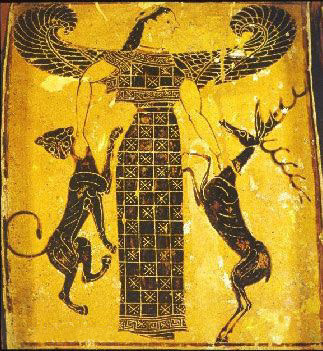


Credits:
***user box by Aterios***
***Artemis divider by Renai***
My altar c: / Quote fragment from Sappho / Diana's Bath by Louis Devedeux / Artemis in the 'Pastoral' section of Fantasia (unknown gif maker) / Diana the Huntress by Guillaume Seignac / Detail of Artemis depicted as the Potnia Theron (Lady of the Beasts) from the Francois Vase / Fountian of Artemis (Diana) of Ephesus at Villa d’Este / Quote Fragment from Ursula K. Le Guin
#sorry for the long post#original intro post got taken down#info post#personal practice#personal#artemis#potnia theron#hecate#hekate#apollo#apollon#hellenic pantheon#hellenic polytheism#hellenic gods#hellenic community#hellenic worship#pagan#deity work#deity worship#deity prayers#long post#marian devotion#norse pantheon#celtic pantheon#roman polytheism#devotional polytheism#christian polytheism#info page#blog info#religious syncretism
117 notes
·
View notes
Text
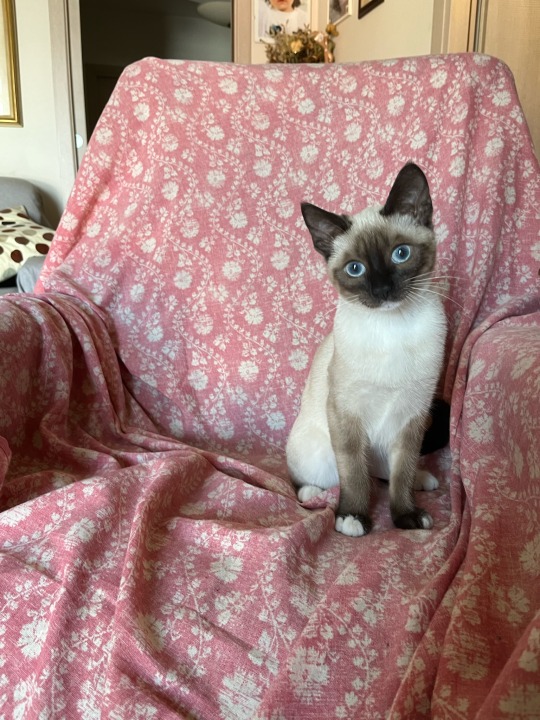


sunday
3 notes
·
View notes
Text
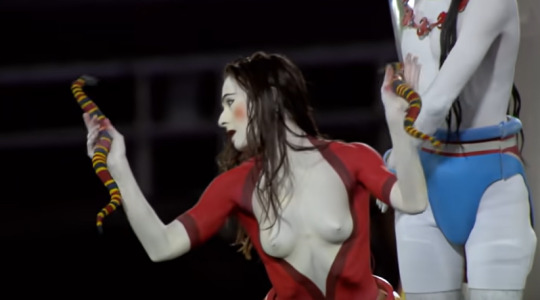
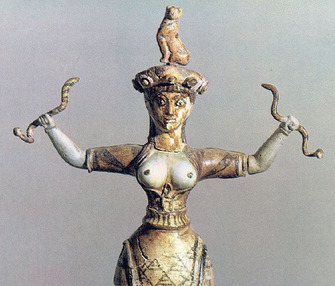

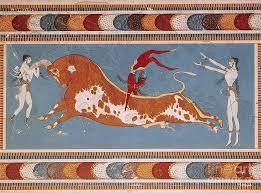




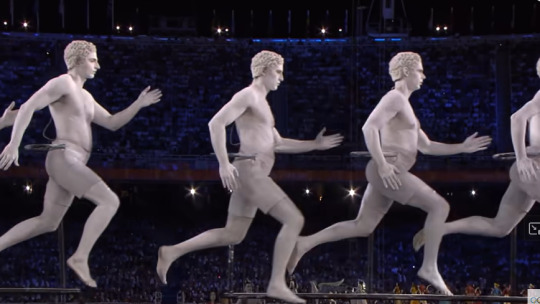

no because it was crazy
5 notes
·
View notes
Photo
Mistress of Animals.

Repoussé plaque with a winged goddess holding lions Greek, East Greek Orientalizing Period 660–620 B.C.
MFA Boston
230 notes
·
View notes
Text

Mother 💃🏻🐍👁️🗨️🌿
May’s illustration is simply called ‘Mother’ as the figure depicted is not one specific goddess, but a personification of the primordial maternal deity all Ancient Mediterranean mother goddesses seem to have sprung from🪴
During my trip through Sicily I became fascinated with the origins of the gorgon and what she represented to the ancient people of Sicily and Magna Graeca. I learnt in some cases the gorgon would be depicted in the pose of the Potnia Theron, Mistress of Animals, who much later had associations with many of the female Olympians. This took me down a rabbit hole, reading up on the Scythian snake-legged goddess who sometimes had the form of the gorgonic potnia theron, the Minoan snake goddesses brandishing snakes, and then the chthonic poppy goddesses of the Cyclades who inhabit the border of the living and the dead. There’s even connection to the goddess Cybele or Bona Dea, who similarly encompass that space of overall Mother of the Gods.
From reading about all these divine mothers from all over the Greek world, I wanted to encompass them all together in their origin. I feel a bit conflicted because it is heavily my own interpretation and I don’t want anyone to feel mislead, but I just wanted to capture the vibe of a powerful, intimidating, ancient goddess who has heavy ties to the balance between life and death✨
#tagamemnon#flaroh illustration#greek mythology#illustration#greek myth#sicily#magna grecia#hellenic mythology#hellenic pagan
677 notes
·
View notes
Text

I noticed there wasn’t much information out there about the Magna Mater, so I put something together. Partially for my own use, partially to help others.
Note:
This is not everything about her. My sources are mostly Theoi.com and Greek Religion by Walter Burkert.
#hellenic polytheist#pagan#witch#hellenic pagan#hellenic polythiest#helpol#pagan witch#witch blog#cybele#kybele#magna mater#matar#meter#potnia theron#mater Theon#artemis goddess#artemis#goddess#phrygian goddess#phrygian#Anatolian pagan#Anatolian goddess
22 notes
·
View notes
Text
Potnia Theron
This is about brilliant Artemis her golden arrow, her hunting of deer, her pride in arrows, the sacred virgin, the sister of Apollo in his gold sword, Artemis
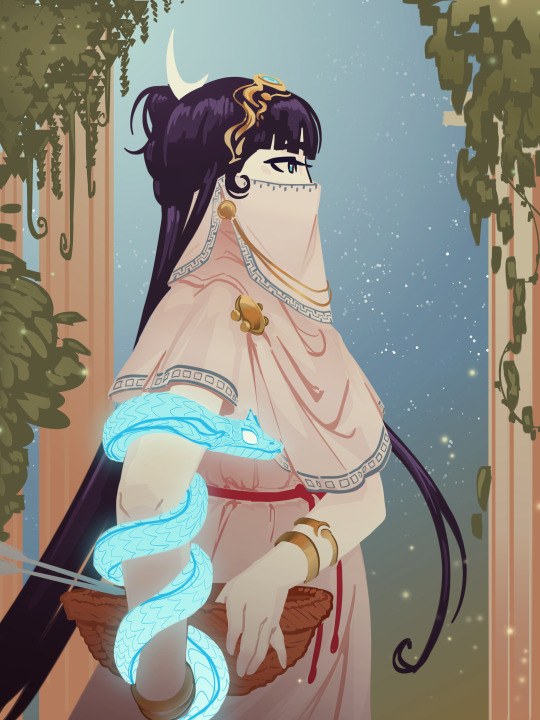
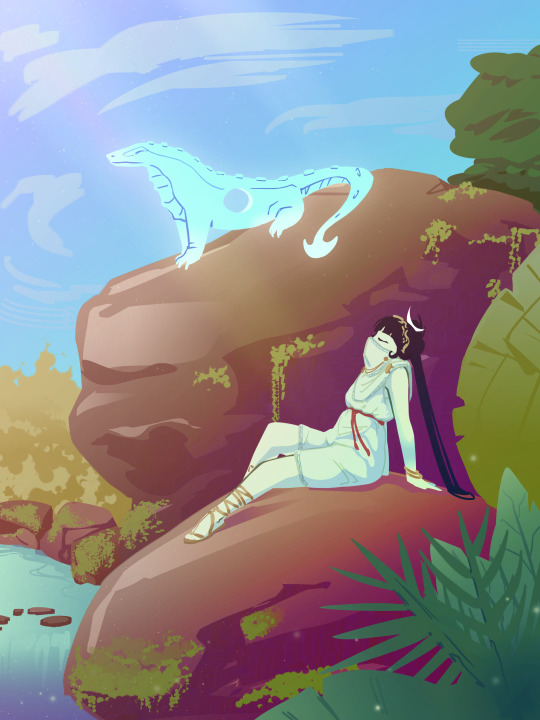
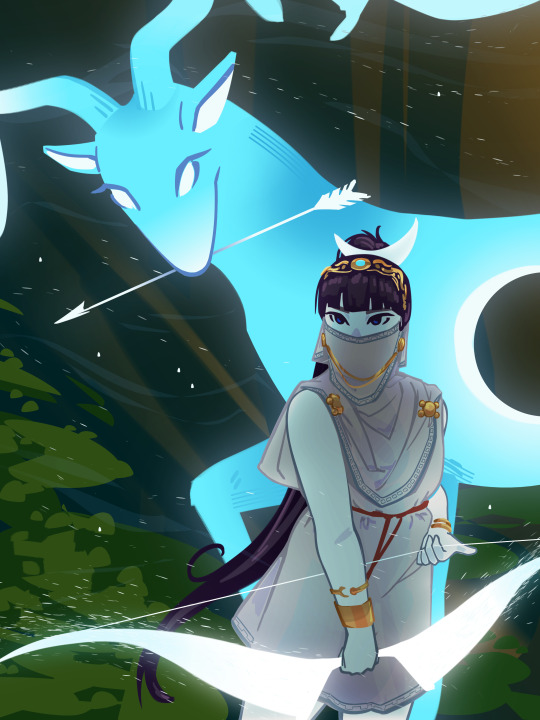
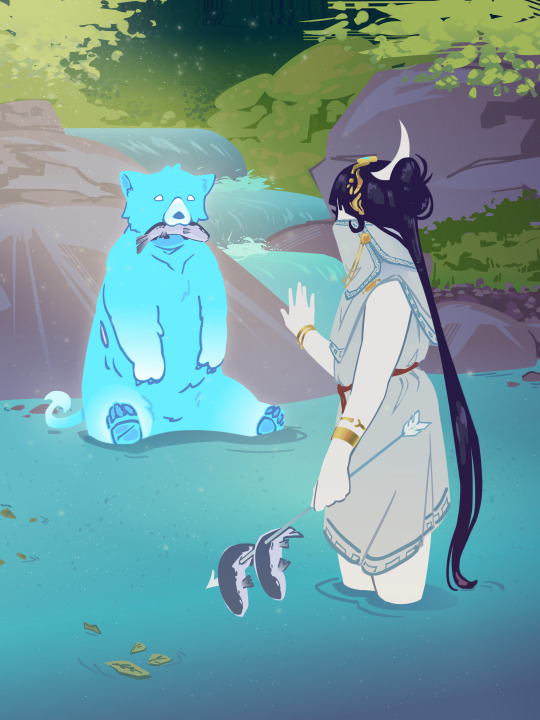
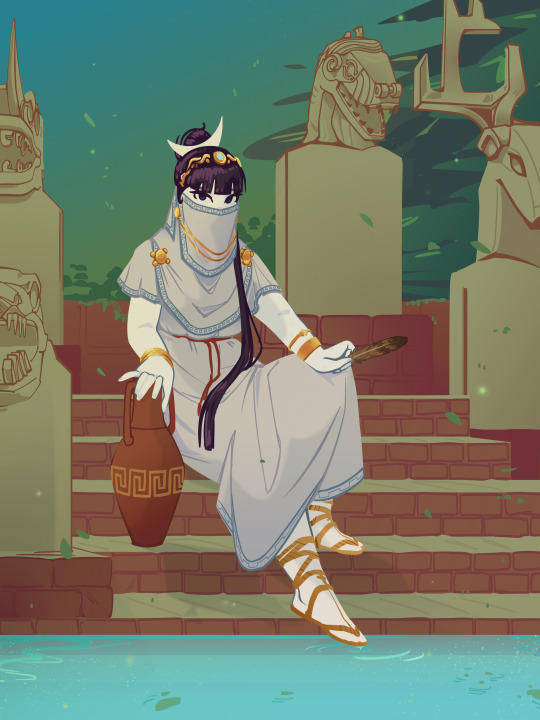
#finally#my hunter artemis#in full glory#took me about 3 months jesus christ i hate university#BUT SHE'S HERE#i will make a post about the process later cause i really like all the references i gathered together in order to make this series#tp#hunter my beloved#my art#art#greek mythology
199 notes
·
View notes
Text
Yes!! I associate hummingbirds and deer with her so much! I love this
How it feels to worship Mother Nature








Saw someone else do this with their deities so wanted to give it a go!
Might try writing something about my experiences and feelings of devotion as well - anybody else worship or work with an earth goddess? I'd love to hear about it!! 💚🪲🌱
#pagan goddesses#worship goddess#goddess worship#pagan#magna mater#potnia theron#mother earth#mother goddess
70 notes
·
View notes
Text
herb bride as potnia theron

78 notes
·
View notes
Text
Epithets for Artemis
Agrotera - Of the Hunt Agreia - Of the Wild Elaphaea - Of the Deer Daphnaea - of the Laurel Tree Cedreatis - Of the Cedar Tree Caryae/Caryatis - Of the Walnut Tree Limnaea/Limnatus - Of the Lake Heleia - Of the Marshes Eurynome - Of Broad Pastures Lycaea - Of the Wolves Leucophryne - Of the White Bird Paedotrophus - The Nurse of Children Philoeirax - The Friend of Young Girls Orsilochia - The Helper of Childbirth Selasphorus/Phosphorus - The Light Bringer Soleira - The Saviour Hemerasia - She who Soothes Hymnia - Of the Hymns Hegemore - The Leader of Dances Ariste - The Best/The Excellent Eucleia - Of Good Repute Calliste - The very Beautiful Basileis - The Princess Ehiereia - The Priestess Heurippa - The Horse Finder Peitho - The Persuasive Pyronia - Of the Fire Potnia Theron - Mistress of Animals Io-khéira - Pourer of Arrows/Delighting in Arrows Hecate - Far-Shooting Chryselacatus - Of the Golden Distaff/With Shafts of Gold. Chrysenius - Of the Golden Reins Chrysothronus - Of the Golden Throne Celadeinus - Strong - Voiced Celadeine - Lady of Clamours Potnia Thea - Goddess Queen
#Artemis#artemis goddess#artemis deity#artemisian#goddess#goddess worship#epithets#hellenic#praise to the goddess#praise to our lady
164 notes
·
View notes